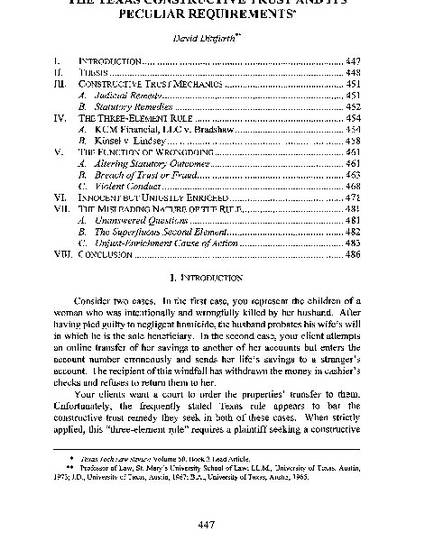
Consider two cases. In the first case, you represent the children of a woman who was intentionally and wrongfully killed by her husband. After having pled guilty to negligent homicide, the husband probates his wife's will in which he is the sole beneficiary. In the second case, your client attempts an online transfer of her savings to another of her accounts but enters the account number erroneously and sends her life's savings to a stranger's account. The recipient of this windfall has withdrawn the money in cashier's checks and refuses to return them to her.
Your clients want a court to order the properties' transfer to them. Unfortunately, the frequently stated Texas rule appears to bar the constructive trust remedy they seek in both of these cases. When strictly applied, this "three-element rule" requires a plaintiff seeking a constructive trust to prove: (1) that the defendant acquired property from the plaintiff through either breach of trust or fraud, (2) that allowing the defendant to retain the property would unjustly enrich him, and (3) that the defendant currently possesses the plaintiff’s property or its traceable product.
Neither of the clients in these hypotheticals can prove acquisition of their property by breach of trust or fraud. The rule would seemingly deny them a constructive trust, leaving only the possibility of a monetary award. Although the Supreme Court of Texas has referred to this three-element rule as "generally required," the Court's decisions support a different approach.
Those decisions indicate that the Texas Supreme Court is very likely to approve a constructive trust in both of these hypothetical cases. In this Article, the Author argues that the stated rule should be modified to reflect those decisions. Such a modified rule would avoid the confusion caused by the three-element rule and free the constructive trust to better perform its function of protecting property rights.
